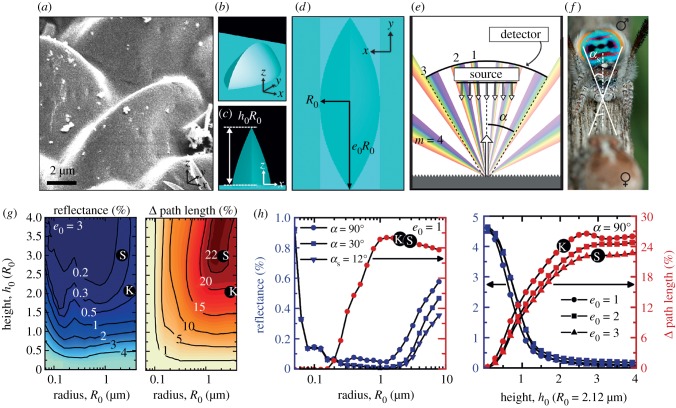Figure 2.
FDTD simulations confirm that spider-like microlens arrays cause path length increase and decrease specular reflectance. (a) SEM micrograph of a group of microlenses of M. speciosus in a super black region. (b) Perspective view of single microlens in the simulation of an infinite hexagonal array. (c) xz perspective and (d) top views of the single microlens, including definitions of the geometrical parameters used in the simulation. (e) Schematic of grating-like behaviour (showing orders m = 0 through to 4) of the periodic microstructure, with definition of collection angle α, where only reflected angles lesser than α are collected in the experimental reflectance measurement as well as by the female spider. (f) Photograph of male (top)–female (bottom) interaction, with an estimate of the collection angle, α, for female spiders, which is determined by considering male abdomen width, female eyes centre-to-centre distance, and courtship distance. The male abdomen is approximately 2.1 mm wide. Photo courtesy of Jürgen Otto and may not be reproduced. (g) Contour maps showing the dependence of reflectance (left) and change in path length (right) on the microlens length scales: radius, R0, and height, h0, for lens elongation e0 = 3 and collection angle, α = 90°. ‘S’ and ‘K’ approximate the height and radius for M. speciosus and M. karrie, respectively. (h) Reflectance (left axis, blue curves) and change in path length (right axis, red curves) for different α (left plot) and e0 (right plot) and as a function of R0 (with e0 = 1, left plot) and h0 (where α = 90°, right plot).

